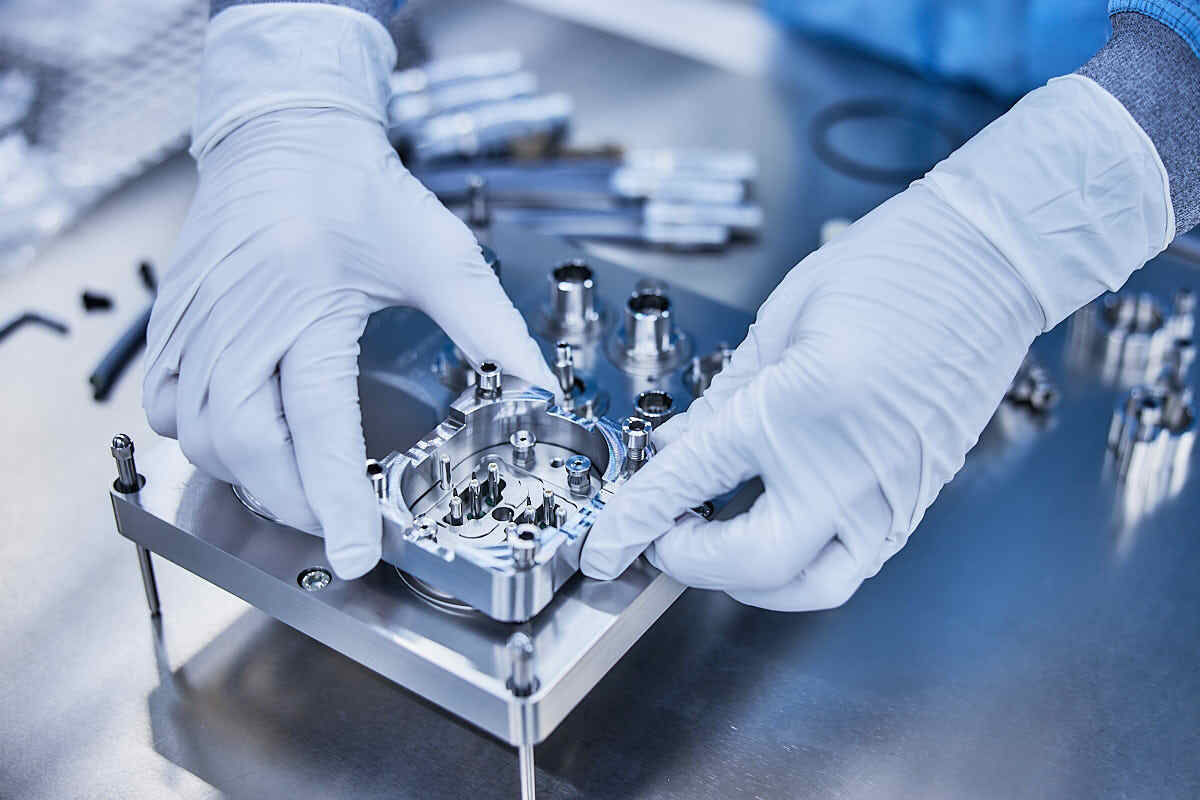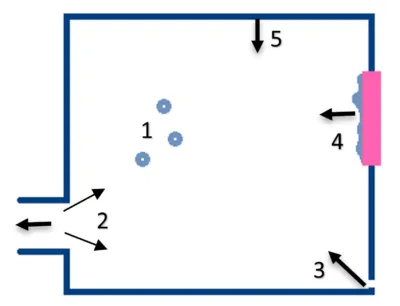Glass and Ceramic Materials in Ultra High and Ultra Clean Vacuum

Glass and ceramics have functional advantages and disadvantages compared to metals due to their functional properties. Both materials are used in Ultra High Vacuum (UHV) and Ultra Clean Vacuum (UCV). Glass benefits from its low coefficient of thermal expansion (CTE), its inertness towards harsh chemical environments and low thermal and electric conductivity. A good example is the use of glass as an insulator for high voltage feedthroughs.
In the case of UHV, outgassing of any construction material will take place in some form in vacuum applications. Two of the main drivers of outgassing of construction materials are:
Vapor pressure for both glass and ceramics is very low, making it highly suitable for vacuum applications. Metals also have a low vapor pressure, however, for some demanding applications, this can become a significant barrier. On the other hand, the advantage of metal is that it can be formed easily in any design. It can also be bonded to other surfaces and materials by conventional techniques such as welding. Nowadays, glass offers more functional opportunities in terms of design freedom due to new manufacturing technologies. In addition, it allows for various bonding techniques, eliminating the restrictions for using it in vacuum applications. A great example of forming complex 3D structures in glass is by using Selective-Laser-Induced etching (SLE).
The specific surface area of glass is also very low compared to other materials. In general, glass has a smooth, strong, and rigid surface. This is also true for ceramics, except for the fact that they can also have a larger internal surface area due to porosity. Another advantage is that both glass and ceramics can be baked to high temperatures in different non-inert environments to eliminate the gasses and adsorbed species. This allows cleaning the vacuum system thoroughly after it got contaminated by external sources.
Ultra-High and Ultra Clean vacuum means nothing more than maintaining a volume with a very low amount of (unwanted) molecules. These molecules can come from several sources (see figure below):

Glass can be used instead of metal when specific functional properties become important.
It enables a deeper vacuum, can cope with more extreme environmental conditions and has a lower expansion coefficient. Choosing materials that have low outgassing by diffusion and a low amount of surface molecules will allow you to reach better vacuum requirements.
LouwersHanique engineers have accrued boundless know-how regarding the optimization of matching materials, given the various expansion coefficients, viscosity and joining temperatures.
Various technologies are applied, such as direct joining, soldering, and thermo-compression.
Want to know more about the benefits of glass for your specific UHV & UCV application?
Read more about our feedthroughs or unique bonding techniques.
Or contact us directly so we can help you!
Nadja Schuh is our R&D engineer and the author of this blog article. She has more than 15 years of experience in materials and cleanliness within the high tech industry. Nadja has a DfSS Black Belt and is focused on high quality and continuous improvement. As an engineer at LouwersHanique, she is working with glass and ceramics in high tech applications on a daily basis. She has found these materials especially interesting ever since she became familiar with them when attending an evening course during her chemical engineering studies.
